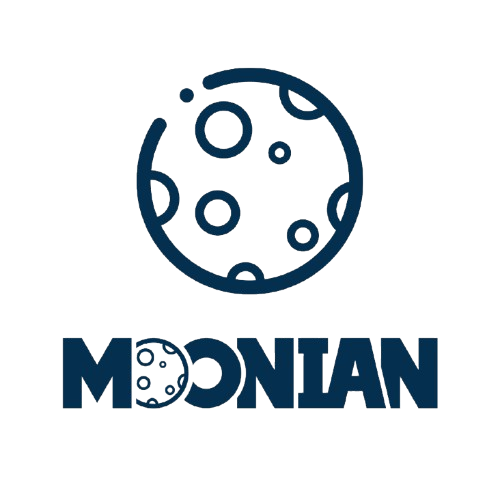Why Customization Matters in Modern Furniture Design
The integration of technology into furniture has evolved from an added feature to a fundamental expectation. However, off-the-shelf socket solutions often present limitations that hinder design innovation:
- Aesthetic Compromises: Standard finishes may clash with carefully curated color palettes and material selections
- Functional Gaps: Fixed interface combinations fail to address specific use cases across different furniture categories
- Brand Dilution: Generic components undermine the cohesive brand experience premium furniture lines seek to deliver
- Innovation Barriers: Limited configuration options restrict creative possibilities in furniture design
Custom pop-up sockets transform these limitations into opportunities for brand expression and technical innovation.
The Anatomy of Customization: Key Design Dimensions
1. Aesthetic Integration
The visual harmony between socket and furniture defines premium quality:
- Material Selection: Choose from brushed aluminum, anodized finishes, zinc alloy, or custom-matched composites that complement your furniture’s material palette
- Color Matching: Precise color calibration to align with your brand’s specific Pantone references or material finishes
- Brand Marking: Discreet yet clear logo integration through laser etching, embossing, or custom badge application
- Profile Design: Custom bezel shapes and sizes that align with your furniture’s design language
2. Interface Configuration
Tailor the functional components to match user needs:
- Power Compositions: Optimize AC outlet types (EU, UK, US) and positioning based on target markets
- Charging Technology: Integrate USB-C Power Delivery (up to 100W), USB-A, and wireless charging modules in configurations that match device usage patterns
- Data Integration: Include HDMI, Ethernet, 3.5mm audio, or specialized connectors for specific applications
- Modular Arrangements: Create interface layouts that prioritize user convenience and cable management
3. Mechanical Innovation
The user interaction experience can be customized to reflect brand values:
- Activation Methods: Choose between manual push-pop, smooth pneumatic, or silent electric activation mechanisms
- Movement Patterns: Standard vertical rise, angled presentation, or sophisticated pull-pop-up designs for enhanced accessibility
- Durability Specifications: Customize cycle life ratings based on expected usage intensity across different furniture applications
4. Technical Performance
Ensure the technical capabilities match the furniture’s purpose:
- Power Capacity: Configure electrical specifications to support high-demand applications like gaming stations or executive suites
- Safety Certifications: Pre-configure for CE, UKCA, UL or other region-specific compliance requirements
- Thermal Management: Optimize heat dissipation for sustained high-power operation
- Connectivity Options: Integrate IoT capabilities for smart office applications where relevant
The Customization Process: From Concept to Production
Phase 1: Discovery & Requirement Analysis
- Application Profiling: Understand the specific use cases, user demographics, and environmental factors
- Technical Assessment: Evaluate power needs, interface requirements, and installation parameters
- Brand Alignment: Identify design elements that reinforce brand identity and market positioning
- Regulatory Planning: Determine certification needs and compliance pathways for target markets
Phase 2: Design & Prototyping
- 3D Modeling: Create detailed digital models showing integration points and mechanical clearances
- Material Sampling: Provide physical samples for finish evaluation and quality verification
- Functional Prototyping: Develop working prototypes for real-world testing and user feedback
- Iterative Refinement: Fine-tune designs based on prototype performance and stakeholder input
Phase 3: Production & Quality Assurance
- Manufacturing Setup: Configure production lines for custom specifications while maintaining quality standards
- Batch Testing: Implement rigorous quality checks throughout the manufacturing process
- Certification Management: Coordinate compliance testing and documentation for target markets
- Packaging Design: Create custom packaging that extends the brand experience
Real-World Applications: Custom Solutions in Action
Executive Office Series
- Challenge: Create a power solution that reflects premium status while accommodating extensive technology integration
- Custom Solution: Wide-format pop-up socket with integrated wireless charging, premium metal finishes matching desk hardware, and dedicated spaces for executive accessories
- Result: Cohesive high-end appearance with unmatched functionality for C-level workspaces
Collaborative Workspace Tables
- Challenge: Enable flexible power access across large surface areas without visual clutter
- Custom Solution: Modular power track system with movable pop-up modules, finished to match table surfaces, with optional data integration
- Result: Adaptable power distribution that maintains clean aesthetics during both individual and group work
Residential Kitchen Islands
- Challenge: Balance frequent use with aesthetic minimalism in high-moisture environments
- Custom Solution: Low-profile sliding cover sockets with water-resistant sealing, custom-matched to countertop materials, and optimized for appliance use
- Result: Discreet yet accessible power that withstands kitchen environment demands
Moonian’s Custom OEM Capabilities
As an experienced pop-up socket manufacturer, Moonian provides comprehensive customization services tailored to furniture industry needs:
Our Customization Framework:
- Design Collaboration: Work directly with our engineering team to develop solutions that align with your vision
- Rapid Prototyping: Accelerate development cycles with quick-turn prototype iterations
- Scalable Production: From small batches for limited editions to high-volume manufacturing
- Quality Integration: Maintain consistent quality standards across all custom configurations
Technical Expertise:
- Material Science: Deep knowledge of metals, composites, and finishing techniques
- Electrical Engineering: Sophisticated power distribution and circuit design capabilities
- Mechanical Innovation: Proven experience with diverse activation and movement mechanisms
- Compliance Management: Thorough understanding of international certification requirements
Maximizing Your Customization Investment
Strategic Considerations:
- Market Differentiation: Use custom sockets to create unique selling propositions in competitive segments
- User Experience Enhancement: Tailor interfaces and interactions to specific user workflows
- Future-Proofing: Design with adaptability to accommodate evolving technology standards
- Cost Optimization: Balance custom features with production efficiency through expert guidance
Implementation Best Practices:
- Early Integration: Involve customization partners during initial furniture design phases
- User-Centric Design: Prioritize features that address genuine user needs and pain points
- Prototype Validation: Conduct thorough testing with real users before full-scale production
- Lifecycle Planning: Consider long-term maintenance, repair, and potential refresh cycles
Begin Your Customization Journey:
→ Explore Our Custom OEM Capabilities
→ View Our Custom Design Portfolio
→ Discuss Your Project Requirements
Technical Documentation:
→ Download Our Customization Guide
→ Review Certification Options

